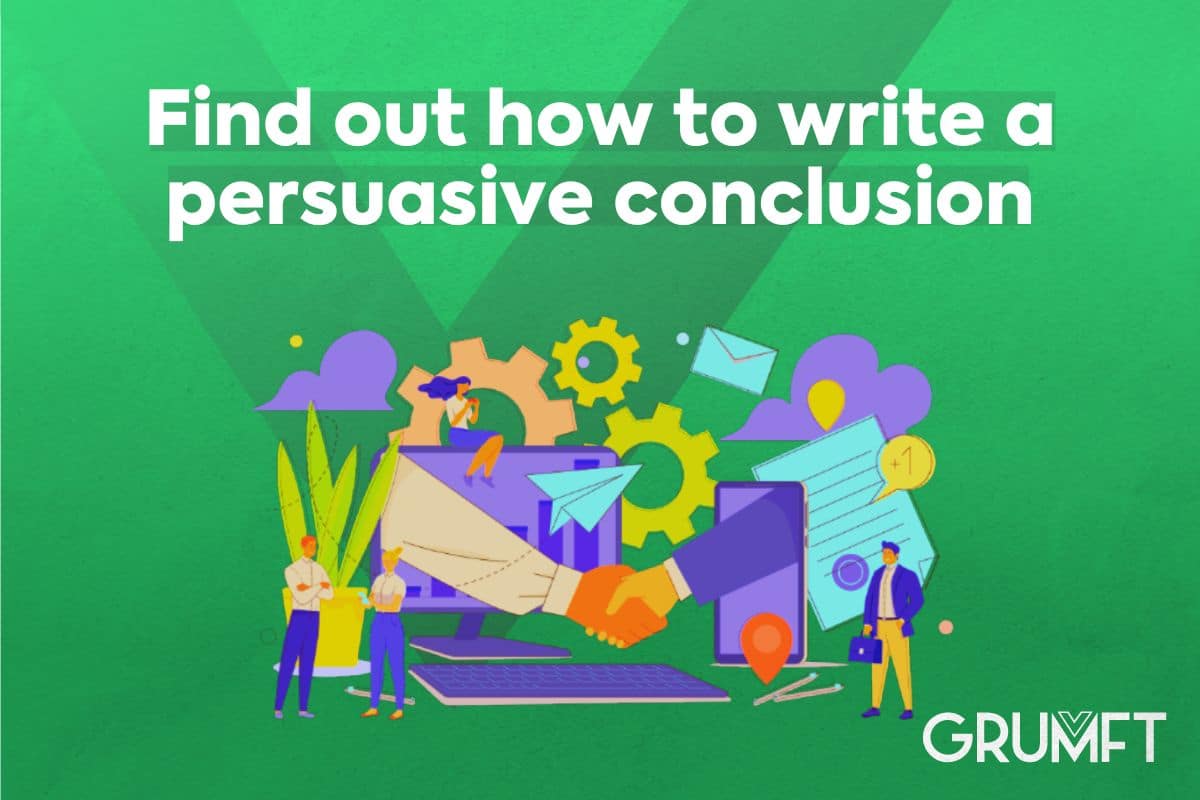You just finished your article and now it is the hardest part: the conclusion. But take it easy, we will give you some help to write a persuasive conclusion to your texts. Take a look!
Index
- 1 The importance of a good conclusion
- 2 What are the steps to write a persuasive conclusion?
- 2.1 Ask yourself: “Is my point clear?”
- 2.2 Get back to the main theme in the introduction
- 2.3 Use a quotation or a curious question
- 2.4 Suggest a solution
- 2.5 Avoid unnecessary phrases
- 2.6 Don’t try to write a sentimental appeal
- 2.7 It is not good to introduce a new idea in the conclusion
- 2.8 Do not summarize it
- 2.9 Make it short
- 2.10 Try to connect with the readers
The importance of a good conclusion
Just picture a history in your head, that one you most like. This history has an “end”, right? In other words, a conclusion. Now picture again the history, but this time without the ending part, it doesn’t make sense, can you see it? Once you are writing an article or a text to your blog or other online platforms is the exactly same idea, it must have a powerful conclusion, otherwise, it is pointless.
The end of the text, the conclusion, is probably the most important (and maybe one of the hardest) part of your article. But why is it so crucial? The conclusion is the perfect moment to reinforce the statements you have previously made in your text/article.
The conclusion is definitely something worthy to invest some time thinking about how to do it, because it is your chance to give your last words about the text’s subject.
When the reader archives the end of the article, they must understand that it is over. Therefore, it is your job to show them it is finished.
What are the steps to write a persuasive conclusion?
Now that you have understand the importance of writing a powerful conclusion, it is time to start writing good ones. Most of the people have a hard time finding the right words to end up a text, but that is totally fine because in this article we will teach you how to do it.
Here are some tips to write a great conclusion for your articles:
Ask yourself: “Is my point clear?”
In the conclusion paragraph the reader has to understand the whole reason why the text was written. Ask yourself “So what?” “What can we understand from this?” End up the article giving something to people think about, a good choice is to read it for a friend and see if he or she gets your point.
Get back to the main theme in the introduction
Try to connect something of the beginning to something in the end. It shows to people your article followed a line, a circle, and in the end is the over of it.
Use a quotation or a curious question
You will give something to people think about, and that is a definitely a good way to the end a text, because it shows people that everything you wrote had an important point.
Suggest a solution
It will redirect the person who is reading to the main topic of the article, and maybe the reader will project the ideas to solve their problems in their own life.
Avoid unnecessary phrases
It is not a good idea to start the conclusion paragraph with ‘In conclusion” or “in closing”, it may seem like you are trying to end it in a very simple and banal way, it will not sound good to the reader.
Don’t try to write a sentimental appeal
If the appeal has a relation with the text it is good, but if you are just trying to make it emocional with some out of character conclusion, don’t try to do it.
It is not good to introduce a new idea in the conclusion
Just focus on making your previously statements clear; it is not the time to bring new topics and ideas to the text.
Do not summarize it
You are not supposed to rewrite the text in a short form, it is the moment to set up your theses.
Make it short
You have already written a lot in the article, the last paragraph it is not supposed to be big because you are already done with the principal points of the text.
Try to connect with the readers
You have no idea of who is reading your article, once it is online, the whole world can do it. Try to keep it real, like you are talking with a friend and trying to make your point.
The main goal in the conclusion is to keep the line of your article, like a full circle, and the end of the text is the circle’s end too. With our tips and a lot of practice you will write very powerful article conclusions. Just remember: it has to be short, ask yourself “so what”? and make your statements clear. Don’t worry, sometimes it takes time to improve our practices. Good luck!
Did you like the content? So follow our blog with news and informations every week. Follow us too on Facebook, Twitter, Instagram and LinkedIn .





